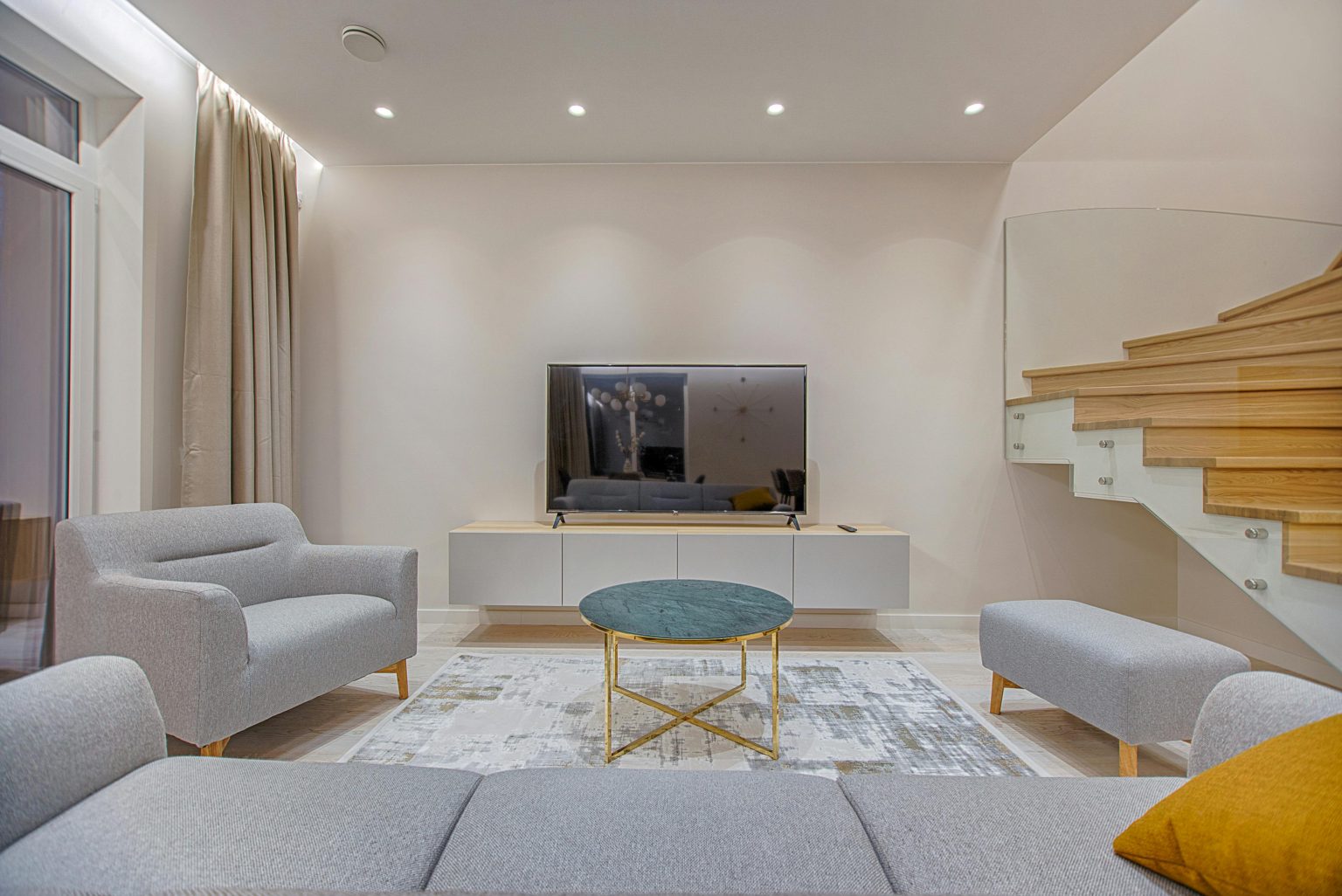Getting the perfect view of your telly shouldn’t feel like solving a Rubik’s cube, yet here we are — squinting at reflections, craning our necks, and pretending we’re comfortable when clearly we’re not. Tilt and swivel mounts have become something of a game-changer in this regard, offering flexibility that fixed mounts simply can’t match.
I’ll be honest: I was skeptical at first. How much difference could a bit of movement really make? Turns out, quite a lot. The ability to adjust your screen’s position can transform your viewing experience from tolerable to genuinely enjoyable.
The thing is, most people don’t realise just how much room lighting, seating arrangements, and even the time of day can affect their viewing pleasure. That’s where these adjustable mounts come into their own.
Understanding the Mechanics Behind Movement
Tilt and swivel mounts aren’t rocket science, but they’re cleverly engineered bits of kit. The tilting mechanism typically allows for vertical adjustment — usually between 5 to 15 degrees up or down. This might not sound like much, but it’s often enough to eliminate those annoying reflections from windows or ceiling lights.
Swivel functionality is where things get interesting. Most quality mounts offer anywhere from 30 to 180 degrees of horizontal movement. Some premium models even go full circle, though I question if anyone actually needs their TV spinning like a lazy Susan!
The internal mechanisms rely on smooth bearings & tension systems that should hold your screen securely while still allowing easy adjustment. Cheaper mounts might use basic pivot points, but they tend to develop play over time — something I learned the hard way with my first budget purchase.
When choosing a wall mount, it’s essential to consider the type of room it will be used in. Bedrooms may benefit from swivel mounts that allow easy adjustments from the bed, especially when incorporated into luxury bedroom designs that emphasize comfort and functionality. Meanwhile, living rooms may prioritize mounts with a wider tilt range for better group viewing.
Conquering Common Viewing Challenges
Glare is probably the biggest nemesis for TV watchers. You know the scenario: it’s a lovely sunny afternoon, but your screen looks like a mirror reflecting everything except what you actually want to watch. A simple tilt adjustment can often solve this completely.
Then there’s the multi-seating dilemma. Your sofa might be perfectly positioned, but what about when guests arrive and need to use the dining chairs or side seats? A swivel mount lets you pivot the screen to accomodate different viewing positions without anyone getting a crick in their neck.
Height issues are another common problem. Maybe your TV is mounted higher than ideal (perhaps above a fireplace), creating an uncomfortable upward viewing angle. Tilting the screen downward can make all the difference to your comfort levels.
Room Layout Considerations That Actually Matter
Open-plan living spaces present unique challenges. Your TV might need to serve multiple zones — the kitchen island, the main seating area, maybe even a reading nook. This is where swivel functionality really shines.
Corner installations can be tricky too. Fixed mounts often leave you with less-than-optimal viewing angles from certain positions in the room. A mount that both tilts and swivels gives you options you didn’t know you needed.
I’ve noticed that room shape plays a bigger role than most people consider. Long, narrow rooms benefit enormously from swivel capability, while rooms with multiple light sources often need that tilt adjustment to find the sweet spot where reflections disappear.
Furniture arrangements change over time as well. What works today might not work after you rearrange for better flow or add new pieces.
Installation Quirks and Realities
Here’s something they don’t always tell you: wall construction matters more with adjustable mounts than fixed ones. The additional leverage from extended positions puts extra stress on your mounting points.
Stud finding becomes CRUCIAL. I can’t emphasise this enough. That slight movement capability means your mount will experience forces from multiple directions, not just straight down like a fixed mount.
Cable management gets more complex too. You need enough slack to accomodate the full range of motion without cables becoming taut or visible. This often means planning cable runs differently than you would for a static installation.
A flexible mount is only as good as its installation. To make sure you get the full range of motion without any issues, it’s worth talking to TV installation experts. They can ensure the mount is placed perfectly to give you the flexibility you need, something I learned when setting up my own home office.
Weight Limits and Load Distribution
Don’t assume all tilt & swivel mounts can handle the same weight as their fixed counterparts. The mechanical complexity often means reduced weight ratings — typically 10-20% less than comparable fixed mounts.
Load distribution changes as you adjust the position. A screen tilted forward puts different stresses on the mount than one tilted back. Similarly, swiveling to extreme angles can create uneven loading that some mounts handle better than others.
I’ve seen people mount 65″ screens on mounts rated for the weight but not really designed for that size. The leverage becomes problematic, especially when swiveled to side angles.
Always check both weight AND size specifications. Some manufacturers provide clear guidance on maximum screen dimensions regardless of weight, which is often the more important limitation.
The Different Types Available
Basic tilt mounts are the entry point — they’re simpler, generally more reliable, and often sufficient if your main issue is glare or viewing height. Expect to pay £20-60 for decent quality.
Full-motion mounts (tilt, swivel, and often extend) are the premium option. These can cost anywhere from £50-200+ depending on build quality and features. The complexity means more potential failure points, but the flexibility is unmatched.
Some mounts offer tool-free adjustment — you can change angles by hand. Others require loosening screws or knobs each time. The tool-free versions are convenient but may not hold positions as securely over time.
There are also motorised options now, though I think that’s getting a bit excessive for most home applications!
Maintenance and Long-term Performance
Moving parts need occasional attention. The pivot points can collect dust, and the tension mechanisms may need periodic adjustment. It’s not high-maintenance, but it’s more than a fixed mount requires.
Check the tightness of mounting screws every six months or so, especially if you adjust positions frequently. The repeated movement can gradually loosen connections.
Some mounts develop “drift” over time — they won’t hold their adjusted position as firmly as when new. This is usually due to worn tension systems and often means it’s time for replacement.
Quality varies enormously in this category. Cheap mounts might work fine initially but develop problems within a year or two. Spending a bit more upfront usually pays off in longevity.
Final Thoughts
Tilt and swivel mounts aren’t magic solutions, but they solve real problems that many people just live with unnecessarily. The key is matching the mount type to your specific needs rather than assuming more movement is always better.
If you’re dealing with glare issues, changing seating arrangements, or multiple viewing positions, these mounts can genuinely improve your viewing experience. Just don’t expect them to fix fundamental problems like poor TV placement or inadequate room lighting.
The installation quality makes or breaks the whole system. A properly installed adjustable mount should feel smooth to operate & hold positions securely. If yours doesn’t, it’s probably worth getting professional help rather than living with frustration.



